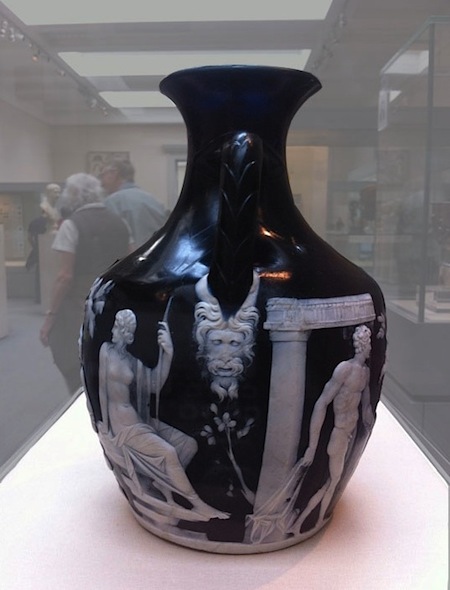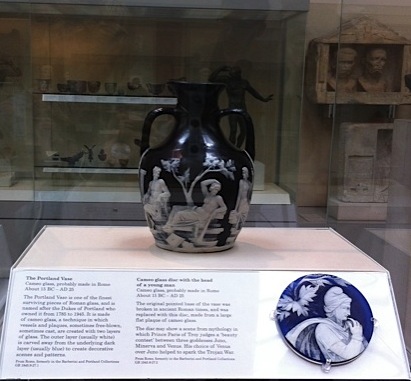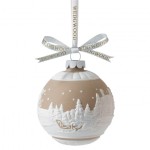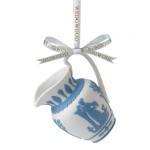

In 1786, the vase became the property of the Third Duke of Portland who lent the vase to Josiah Wedgwood. Wedgwood was already a renowned ‘star’ of the times and a very successful businessman having made and developed major innovations in earthenware and stoneware pottery. He had developed a cream-coloured glaze over a cream-coloured body known as Creamware and when in 1765 Queen Charlotte commissioned a service from him the range was renamed ‘Queen’s Ware’. From 1772 he began work on developing what we now know as Jasperware. Jasperware is a durable, unglazed porcelain with bas-relief white cameo decoration. Metallic oxide colouring agents are used to stain the white Jasper and Jasperware is usually light blue, but it can also be pale green, lilac, yellow, black or dark blue. And, it was with this dark blue that Wedgwood chose to make his copy. It took four years of trials and experimentation until a reproduction of the Portland Vase was completed in 1790. The British Museum also has a Wedgwood Jasperware copy of the Portland Vase on display in the rooms showing 18th century ceramics.
The original Portland Vase and the Wedgwood copy became an 18th century cultural hit taking London ‘society’ by storm and made Jasperware the most sought after ceramics in England and on the Continent. It isn’t entirely fair to make a direct comparison between the glass-cameo and the porcelain vases as being made with different materials there are different restrictions, but the Wedgwood version is a beautiful piece even if it isn’t quite as detailed and delicate as the original.
The Jasperware Portland Vase is a technical triumph and copies allow the beauty of the original to be shared. This is also an example of where the inspiration to copy a work from antiquity furthered the technical knowledge of the 18th century. It was such a success that it also secured the ever resourceful and inventive Josiah Wedgwood a permanent place in the history of ceramics. A famous name that still survives with Wedgwood Jasperware products made and collected in the 21st century.
http://www.wedgwood.co.uk/gifts/by-type/christmas-decorations






